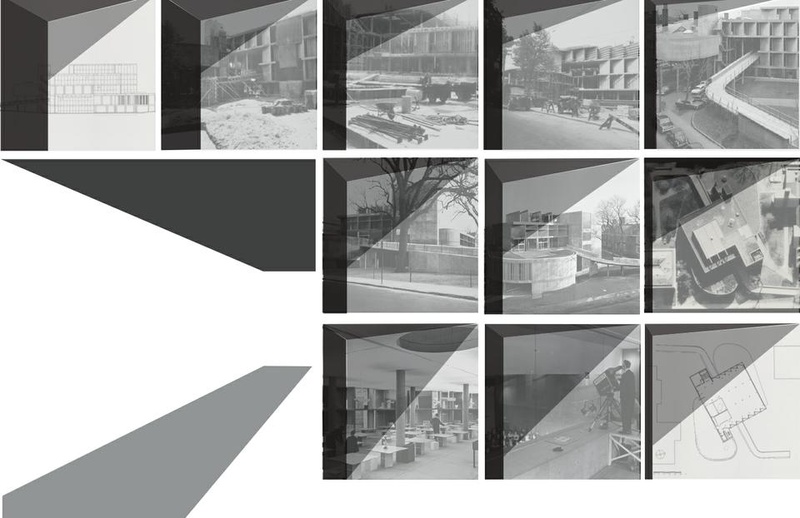Mark E. Talisman ’63 carried wood from a shipyard, to the T, through Harvard Square, and up five flights of stairs in Matthews Hall. Creating large sculptures with the wood he collected, he would work in his room or in space he could find outside.
But in Talisman’s senior year, the Carpenter Center for the Visual Arts opened to provide a home for Harvard’s student and faculty artists. The Carpenter Center, modern architecture pioneer Le Corbusier’s first and only North American structure, was and remains the official home of the Department of Visual and Environmental Studies.
The construction of the art building signaled a decisive change in the trajectory of the College’s attitude toward the study and creation of art in the classroom, creating new space for students to learn, create, and exhibit their work.
“This legitimization of fine arts changed everyone’s lives,” said Frank P. Mouris ’66, an Oscar-award winning filmmaker who credits the Carpenter Center for cultivating a continued love of the arts. “It’s powerful that the building itself could inspire so many students to continue creating.”
A SPACE OF THEIR OWN
Prior to the Carpenter Center’s opening, Harvard did not have a central space in which students could practice and display their art. The College offered art classes before to 1963, but these classes were often taught in conjunction with other schools in the University system.
“There were always art classes, just no place to house them,” said David Rodowick, director of the Carpenter Center and the department chair of Visual and Environmental Studies. “The classes predating the opening of the Carpenter Center were probably being taught under the umbrella of the Graduate School of Design.”
Because the classes offered before 1963 dealt mostly with classical art or architecture, students wanting to practice their art in a studio class were left to find their own art spaces. This meant working more closely with the Houses and House Masters to find local spaces where they could make and exhibit their artwork.
“There was never enough exhibition space in the Square,” Talisman said. “Especially not for students like me who weren’t professionals but badly wanted to have our art showcased.”
As a result, students turned to churches, House libraries, and the Brattle Theater for exhibition space. The House Masters in Quincy House agreed to show Talisman’s work in their residence in order compensate for the College’s lack of showcasing venues.
“It was crazy that they wouldn’t have made space for that. We as artists were left to suffer out in the cold,” Talisman said.
“A FAT CONCRETE WEDGE”
Made of concrete and covered in straight lines, the Carpenter Center was erected in contrast to Quincy Street’s staple Neo-Georgian, classic Harvard red brick structures. Designed by Le Corbusier, the building’s obvious contrast to its surroundings solicited criticism.
“There was certainly a big controversy about having this modernist icon amongst the [Harvard] Faculty Club and the red bricks,” Rodowick told The Crimson in September. “[Le Corbusier] knew that this would be his only major building in North America, so he was essentially given carte blanche.”
The building is significant for more than just providing the department of Visual and Environmental Studies a space, according to Rodowick.
Read more in News
Frosh of Class of 1963, Guinea-Pigs For The First Freshmen SeminarsRecommended Articles
-
‘Say You Love Me’ Challenges Depiction of DesireSexual predation. Innocence. Power. These are some of the themes explored by provocative photographer and video artist Laurel Nakadate in ...
-
Carpenter Center Begins to Celebrate Birth"Circa 1963" honors the Carpenter Center's 50th Anniversary
-
Artist's Exhibit Honors Carpenter CenterAs an undergraduate studying Visual and Environmental Studies, Matt R. Saunders ’97 spent his evenings in the Harvard Film Archive in the basement of the Carpenter Center. Now a visiting lecturer in the department, Saunders’s work has become part of a celebration of the building’s 50th anniversary with an exhibition there of his own.














